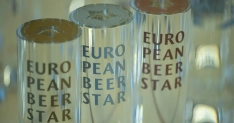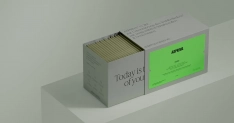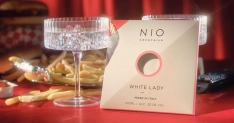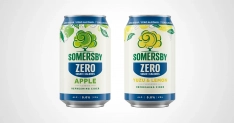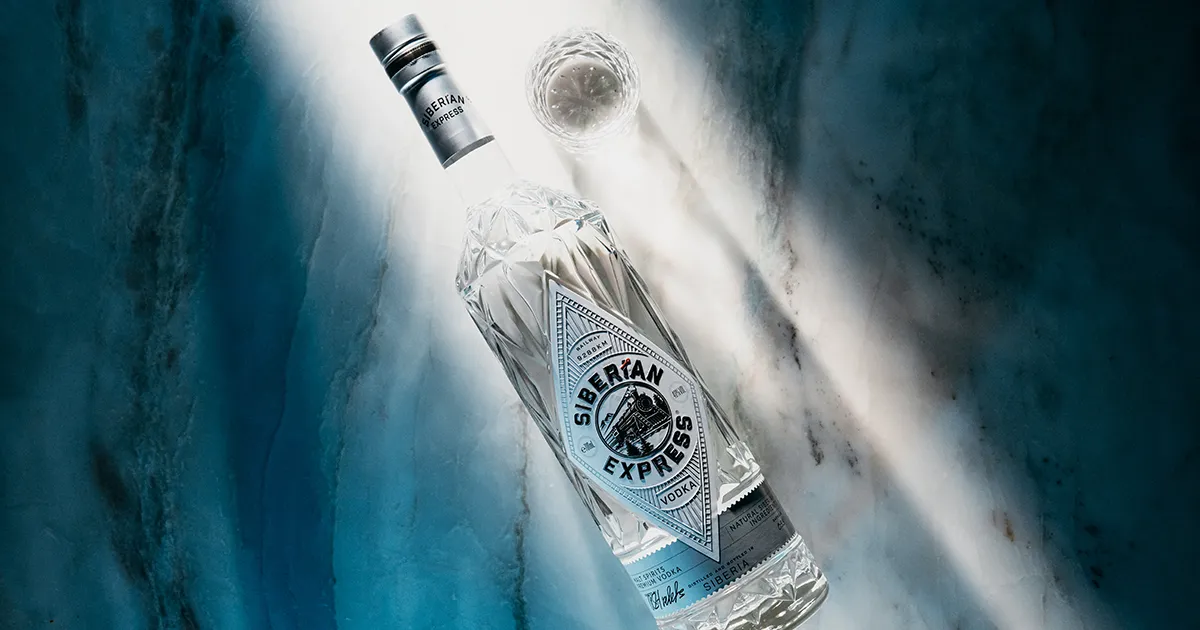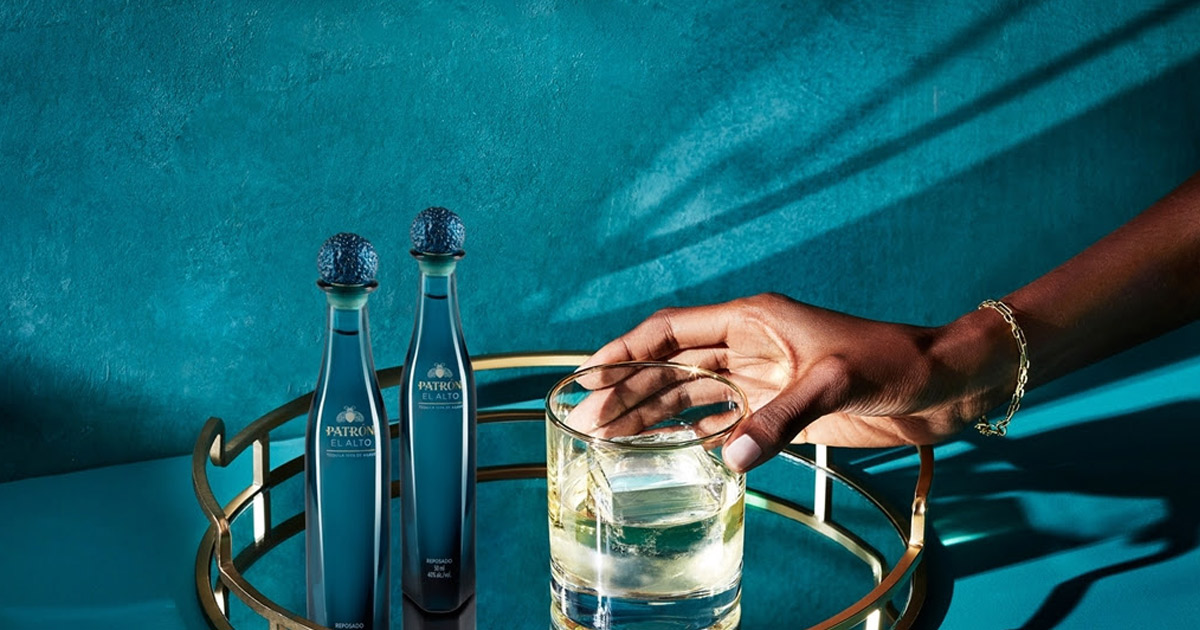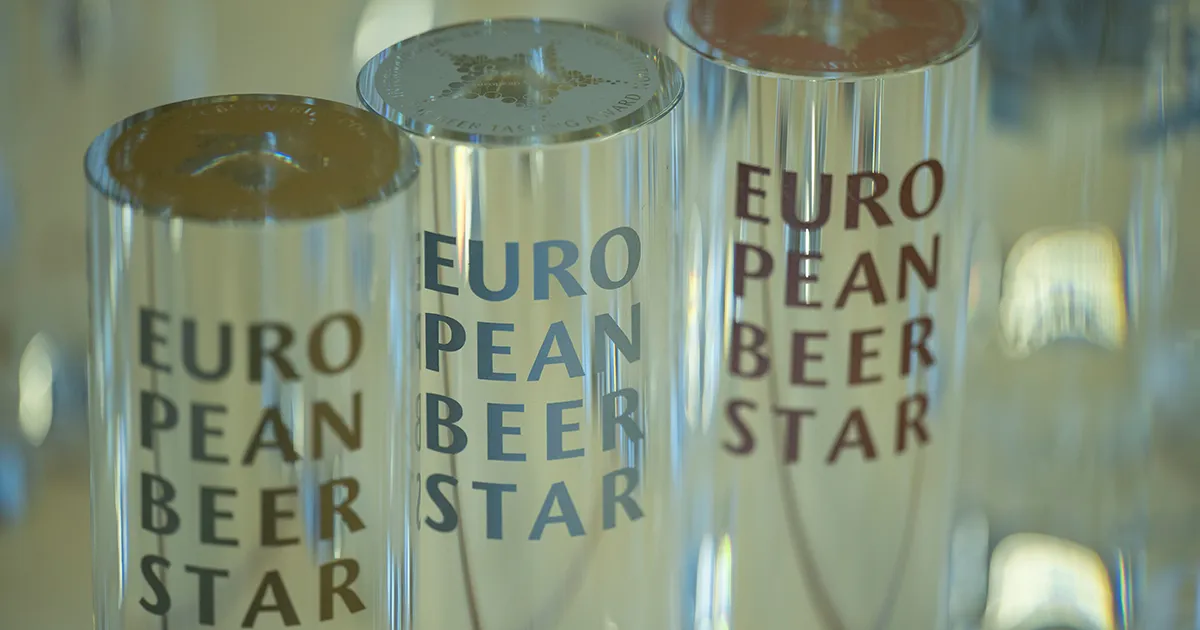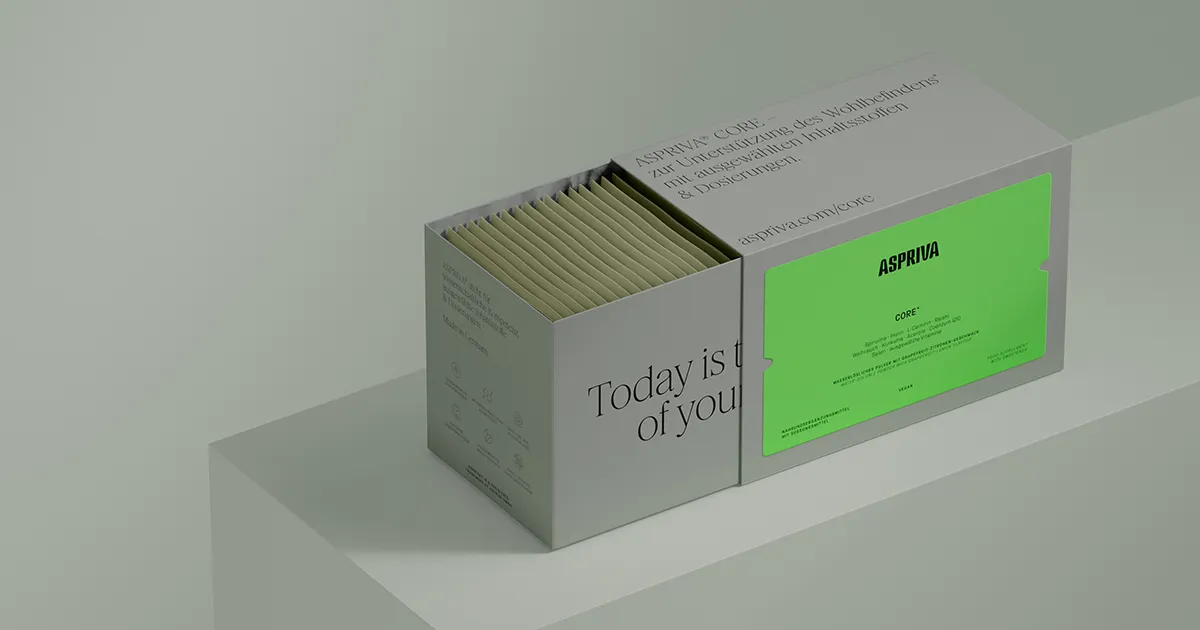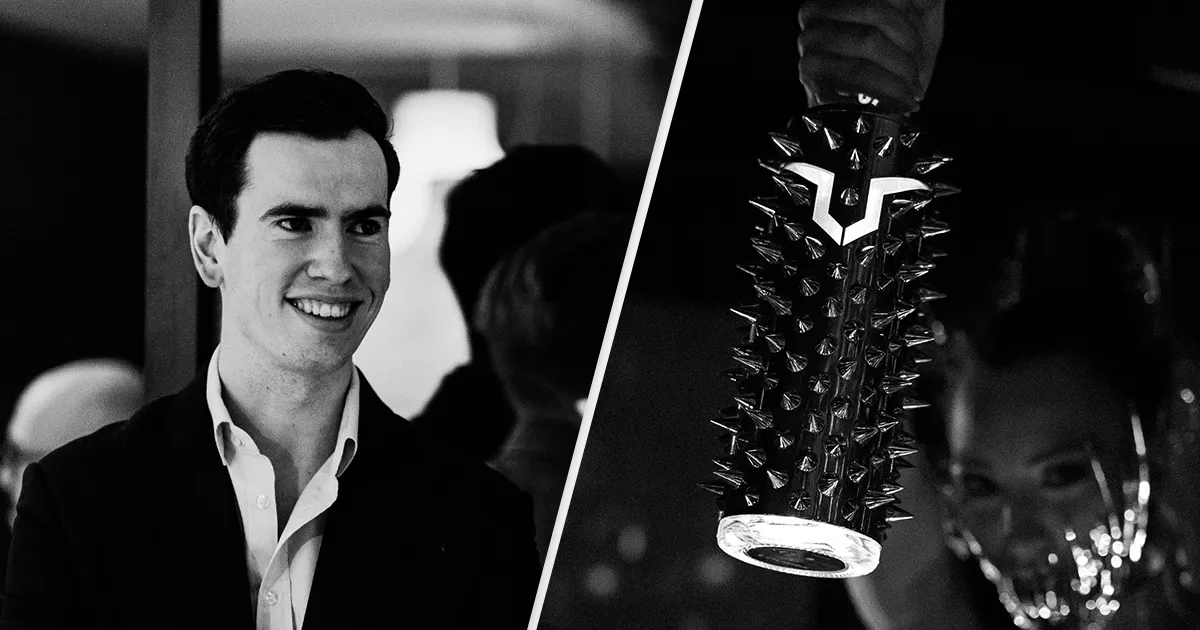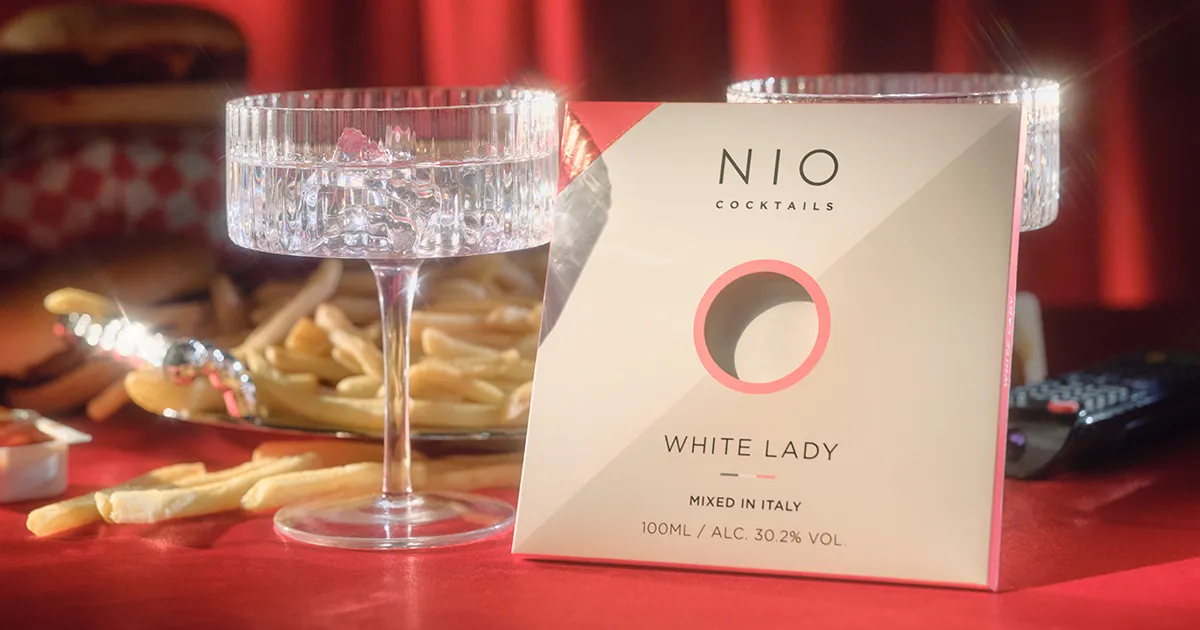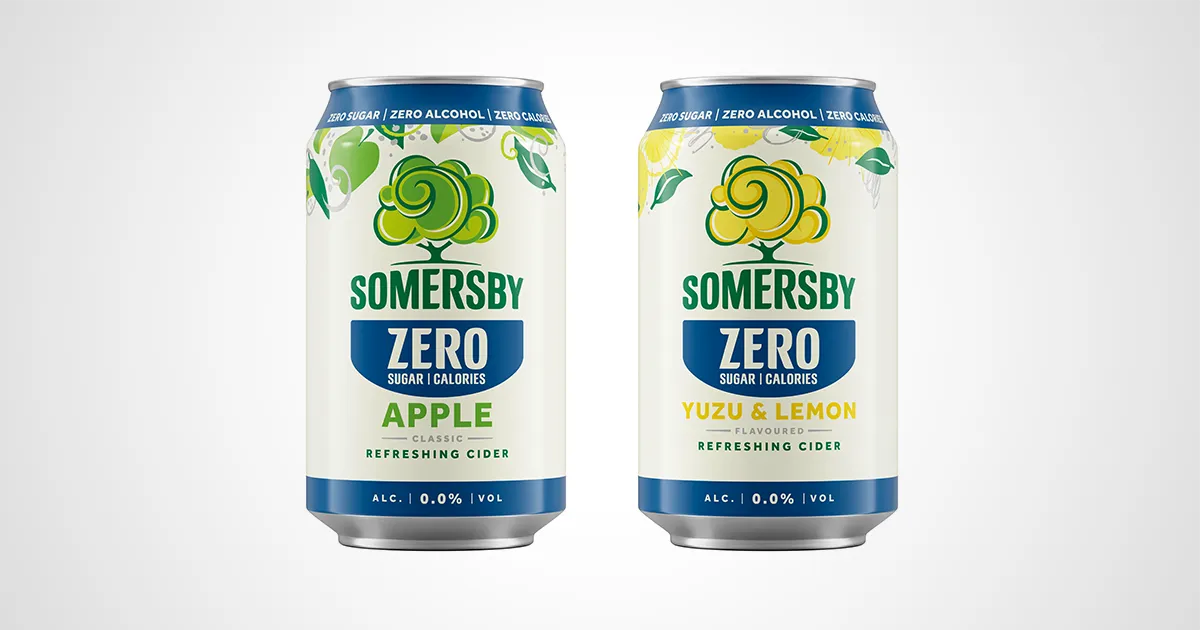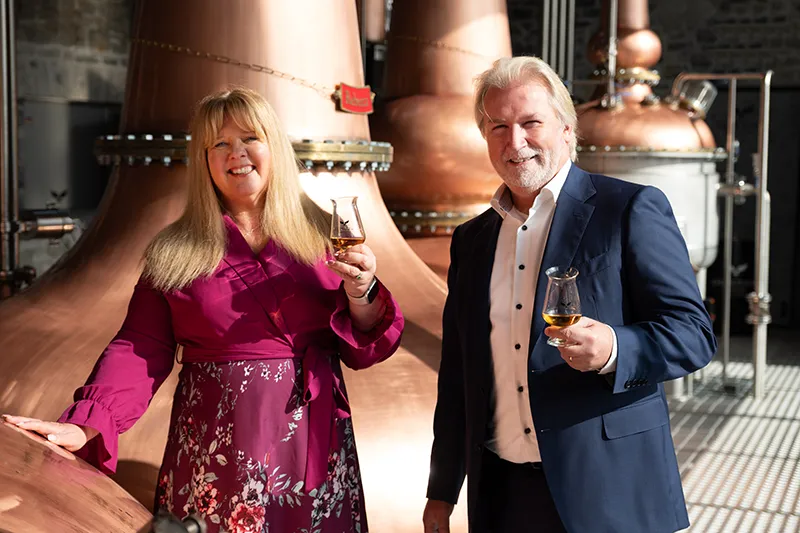Handcrafted whisky from Speyside: Gordon Muir about Benromach
Originally built in 1898, Benromach Distillery is located in the north of Speyside, close to the coast on the edge of the town of Forres. It was brought back to life in 1998 by the Urquhart family, who also own the independent bottler Gordon & MacPhail. From the outset, the family wanted to realize their lifelong dream of producing a single malt whisky with a classic Speyside character: balanced, with a slight hint of smoke. To this day, great importance is attached to craftsmanship in the production of Benromach. The result is award-winning single malt whiskies, shaped by their makers.
In this interview, Gordon Muir, Head of Sales at Gordon & MacPhail, talks about the origins of the Benromach Distillery, the products and the collaboration with the family business Kirsch Import, which took over sales and marketing from and for Benromach in the spring.
The origins of the Benromach Distillery date back to 1898 and since then the distillery has experienced many ups and downs. Tell us about it!
Gordon Muir: Benromach was one of many distilleries built in the late 19th century to satisfy the apparently endless demand for whiskies to use in the blended Scotch whisky brands that were growing rapidly around the world as brandy struggled to cope with Phyloxera destroying grape yields. Unfortunately, by the completion of the distillery in 1900, the ripples from financial issues in the tangled web of whisky investment reached Benromach and the distillery stopped production very soon after opening. The early years of the 20th century were volatile with many distilleries, including Benromach, being brought on and off stream in response to market, economic and world events – remembering of course that almost all malt whisky at this time was used in the production of blends and so the upheaval in supplies would not have been noticed by the whisky drinkers of the time.
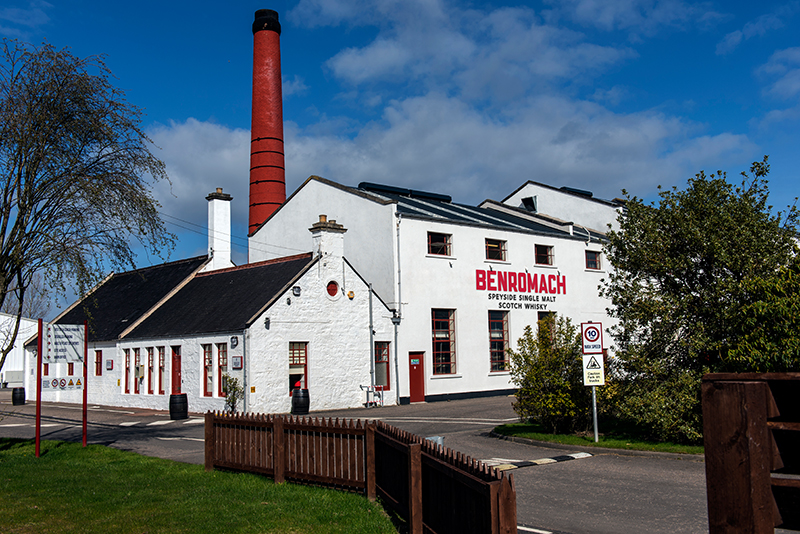
©Benromach
Benromach changed hands a number of times and, through the consolidation of the industry, was operating successfully as part of Distillers Co.Ltd (later known as United Distillers which ultimately became Diageo) until 1983, when over supply in the market and a drop in global demand led to the decision to close down quite a number of distilleries including some that famously remained closed (or have very recently reopened!) including Brora, Dallas Dhu, Glen Albyn, St Magdalen, Port Ellen and, of course, Benromach.
In 1998, the distillery was brought back to life by the Urquhart family, who also own the independent bottler Gordon & MacPhail. How did this come about?
Gordon Muir: As a company that began as a shop, expanded into wholesaling and, very successfully, into filling and maturing casks of whisky from other people’s distilleries to bottle as Gordon & MacPhail, it had long been the dream of the owners to have their own distillery. After the closure of all those distilleries in the early 80s, it must have taken bravery and vision to invest and take on all the costs associated with running a distillery but a dream is a dream and so, in 1993, the company bought Benromach.
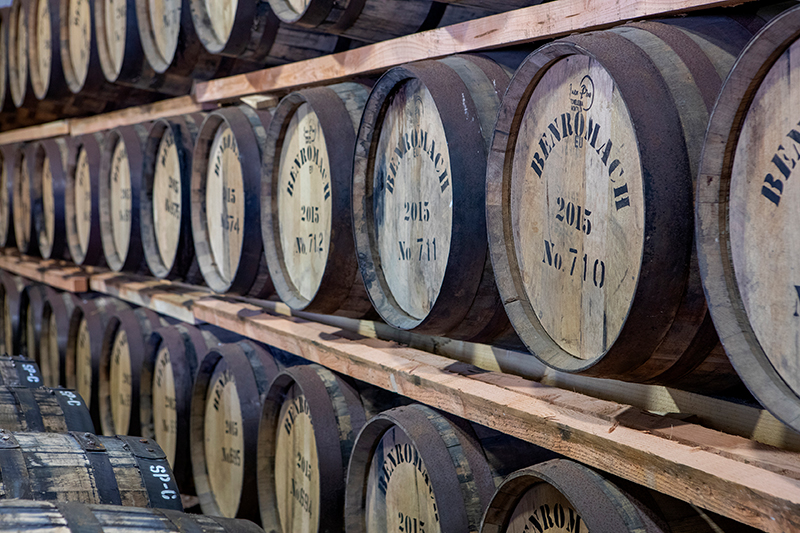
©Benromach
By that time, Diageo had removed all of the production equipment and so what “buying the distillery” really meant was buying the buildings, the brand name and some old stock to add to the Benromach previously filled for G&M already in our warehouse. This presented an unbeatable opportunity for the new owners who, with spirit bought as new make from around 100 distilleries maturing in their stocks, had an unrivalled knowledge of what creates character in whisky and now an almost blank sheet of paper to design the product of their dreams.
What was the vision for Benromach in 1998? How has this vision been realised to date? How has the distillery developed since then?
Gordon Muir: The vision, then as now, was to recreate the amazing old-school style of Speyside whisky that drinkers admired so much. With casks in the G&M warehouse from the 1940s, 50s and 60s to use as reference, the aim was to use old-time techniques and processes to create a whisky that was big and full flavoured but also sweet and approachable, and of course was capable of continuing to develop through a long period of maturation.
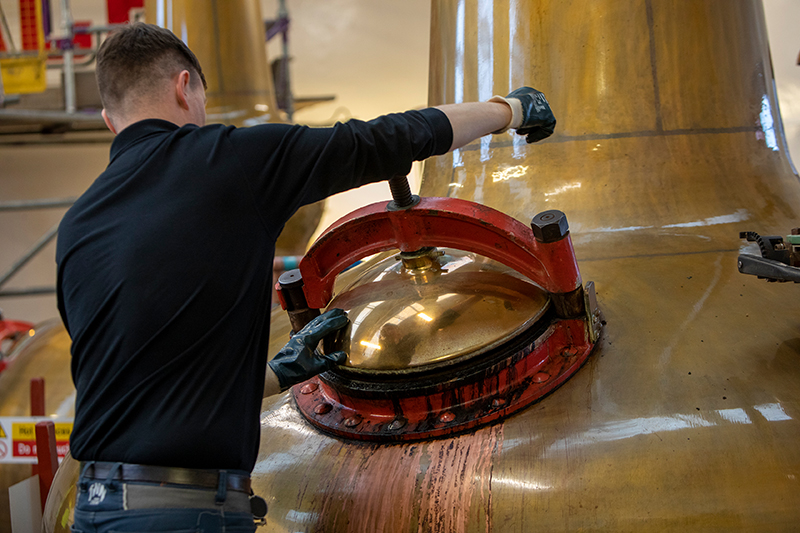
©Benromach
This was the philosophy behind the design decisions of the distillery itself, the equipment and processes and also the ingredients – from using a lightly peated malt as was common in the 40s and 50s and fermenting slowly in wooden washbacks with two types of yeast, to filling only in first fill casks (which I believe is unique in the industry) to manually rolling each hand-filled cask from the filling store, that vision of recreating amazing old-school, flavour-packed malt whisky means we never compromise on quality.
Even today, great importance is still attached to genuine craftsmanship. How is this manual labour reflected in the whisky production at Benromach?
Gordon Muir: Literally every drop of every batch is controlled by the hands, the senses, the expertise and experience of our brilliant distillers. That means understanding the physical interaction of each of the ingredients at each stage, seeing, hearing, smelling how mashing is going or when the low wines are about to start coming off the wash still, or any of a hundred other points in the production process. Temperatures, gravities and strengths are taken with manual instruments, every cask is filled by hand and manually rolled out of the filling store. Who knows what difference each of these tiny decisions makes to the final whisky? What we are certain of is that the cumulation of all of these things creates exactly the full flavoured old school Speyside whisky that we’re looking for and so we won’t compromise, we’ll keep on making Benromach by hand and putting our heart and soul into every single cask.
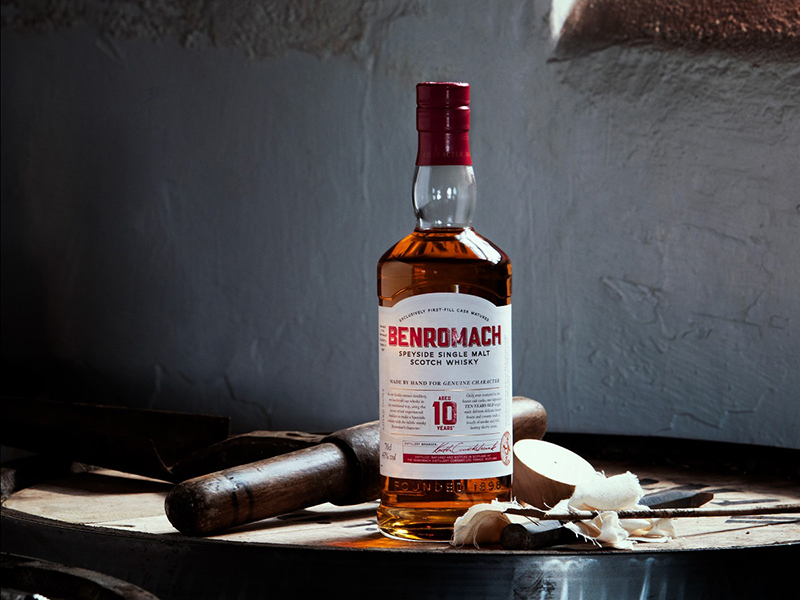
©Benromach
How does this, in combination with the ingredients used, affect the flavour of the whiskies?
Gordon Muir: One effect is that this combination of slightly smokey, first-fill matured with a generally sherry-forward style is very popular and picks up a lot of awards! I think the reason for that is that awards judges (and drinkers) really respond to that big, juicy, mouth-filling flavour with a whisper of smoke that is nonetheless perfectly balanced – which makes it approachable and actually easy to drink at almost any occasion.
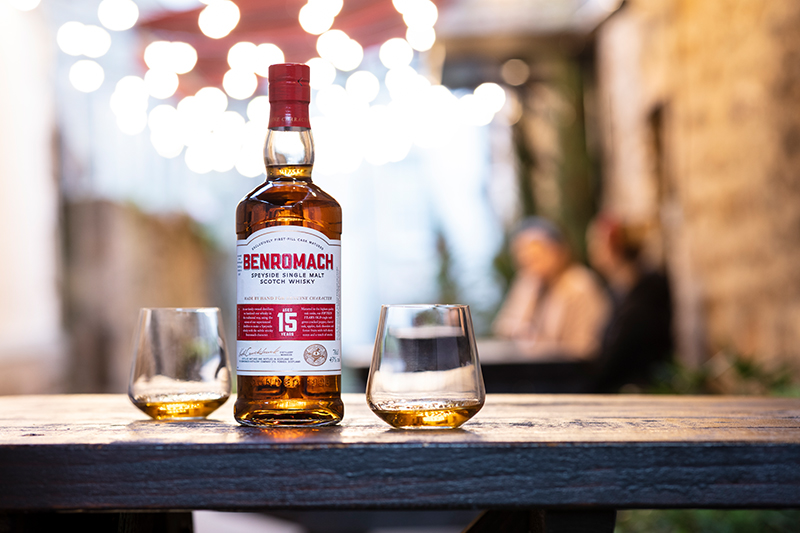
©Benromach
Some of that is easy to trace – the soft smokiness is clearly there because we use a malt that’s lightly peated using mainland peat – but some of it, that mouth-filling character comes from the full combination of ingredients, equipment, processes and people that is unique to Benromach.
What products does the Core Range include? What specialities do they have?
Gordon Muir: Our core range is Benromach 10yo, 15yo and 21yo, along with a Cask Strength Vintage version of the 10. These all share our “house style” of lightly peated malt with maturation in varying proportions of Bourbon and Sherry casks, generally with more Sherry influence and of course always and only first-fill casks.
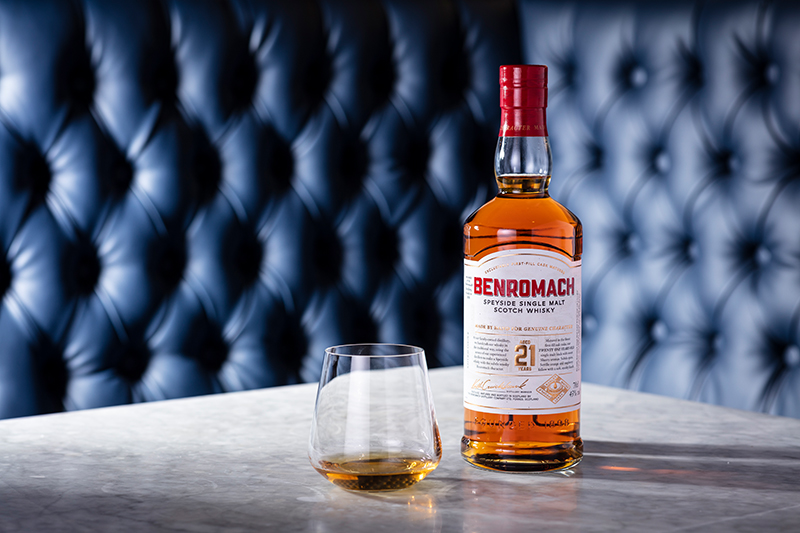
©Benromach
The Contrasts range takes its name as its programme and experiments with single malts that are not the norm for Benromach. What products are there?
Gordon Muir: Our permanent contrasts, which are released as a Vintage batch each year, are Peat Smoke Bourbon Matured and Benromach Organic, which is unpeated and matured in virgin oak. We then have a programme of “Guest Contrasts” which are released as limited edition batches. We’ll do two or three of those releases each year and recent ones include Double Matured Bordeaux Cask, American Virgin Oak, and a really interesting and geeky experiment where we zeroed in on the process of drying the wood used to make casks by releasing side by side Air Dried and Kiln Dried batches, with every other variable identical.
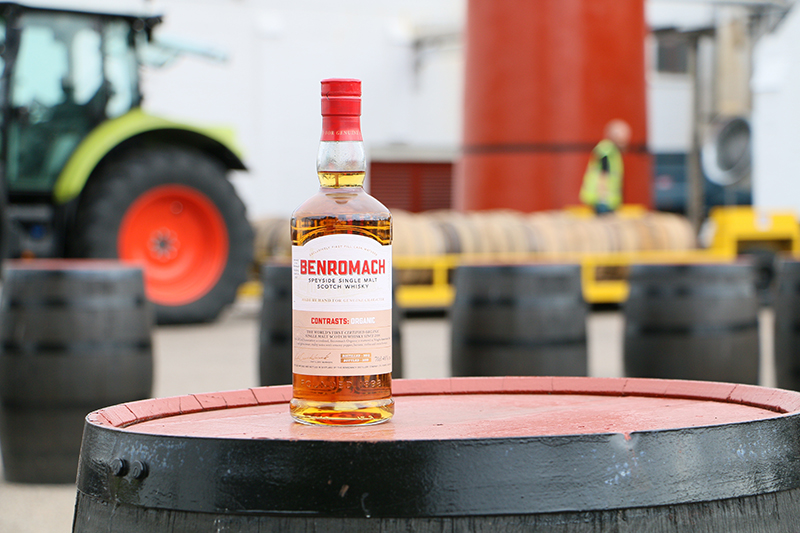
©Benromach
More and more we are trying to use the Guest Contrasts to shine a light back on the core range, to explain how and why these are different to our “house style” – for example heavily peated or unpeated versus our core lightly peated style; or a different maturation from our normal sherry/bourbon mix – so that the range is a cool and interesting way to understand more about flavour generation in whisky rather than just being an endless stream of limited editions that don’t tie together as a coherent whole.
A particularly rare drop is the Benromach 40 YO. Tell us about the product!
Gordon Muir: Yes! It’s very special! I mentioned awards before and this one has won some incredible accolades including Best Spirit In Show at San Francisco in 2022. This was of course produced before the distillery closed down and has been carefully matured in sherry casks since then. This is where the Gordon & Macphail expertise in long-term maturation really benefits Benromach, because the balance and freshness of this dram as a 40 year old is really extraordinary, combined with the density, richness and complexity that only very long-term aging in excellent wood can produce.
The modern visitor centre is open all year round for guided tours and tastings. How long has the centre been open? What can you experience there?
Gordon Muir: The Visitor Centre originally opened in 1999, not long after the distillery refurbishment was completed and spirit was flowing from the stills and has been upgraded several times since it opened. Then, as now, you experience a very “real” tour, being shown around the distillery which, due to the hand-made nature of our process, has the distillers walking around doing their job and they are always happy to chat with visitors and explain what they’re doing. It is a small distillery, with almost everything happening in one room so it’s a great place to see and really understand the various stages of the whisky-making process. And of course there is always a brilliant tasting at the end!
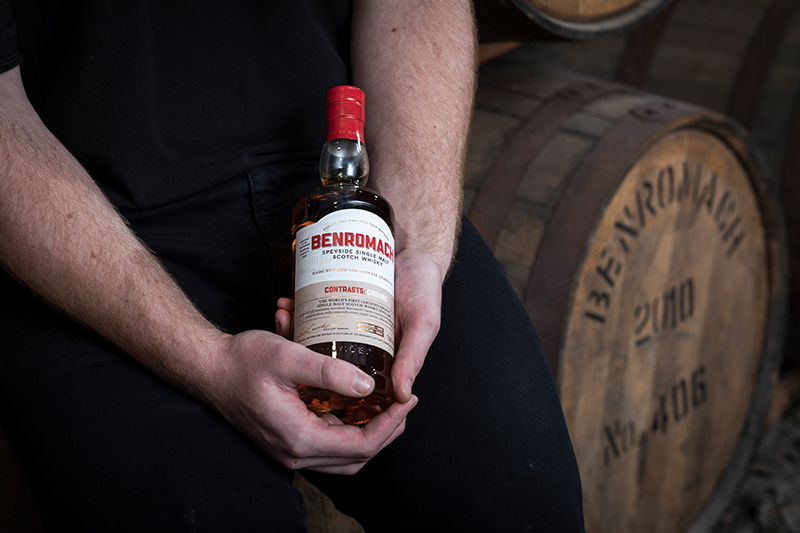
©Benromach
In Germany, you work together with Kirsch Import. What plans and goals do you have together for the German market?
Gordon Muir: As a small-batch, hand made single malt whisky the total amount that we produce will never be huge and so we know that the best places to find drinkers who appreciate the kind of whisky that we make is always going to be specialist whisky shops, specialist online and of course some on-trade outlets. Kirsch are a brilliant partner for us, with tremendous relationships with customers in exactly that space and have done an amazing job on Gordon & MacPhail over the years.
They have also really grown and developed their team under Christoph Kirsch’s leadership and we are delighted with their ability to build our brand through marketing and events as well as getting Benromach into the right customers. We have really exciting plans this year and I can’t tell you everything but I can say that there will be a couple of amazing Guest Contrasts coming up to compare with our brilliant Core Range; and also, if you like Benromach 40 year old there will be something even older and rarer appearing on the German market later this year. That’s all I can say!
Closing time for Gordon Muir. What is your favourite whisky to switch off with?
Gordon Muir: Well you’re going to think it’s a cliché but it’s true, my go-to relax and unwind whisky is Benromach 15year old. I really love it. I’ve always had a thing for that bit-of-peat-and-sherry profile so if the Benromach was all finished I might be reaching for a Highland Park or a Talisker but I’m very lucky to be in a job where the Benromach supply is pretty good!
Benromach | Website | Facebook | Instagram
+++ We would like to thank Gordon Muir for the open and very interesting interview! If you also have an interesting brand, then we should talk. Just send us an e-mail with the subject “about-drinks interview” to redaktion@about-drinks.com – we look forward to hearing from you! +++





